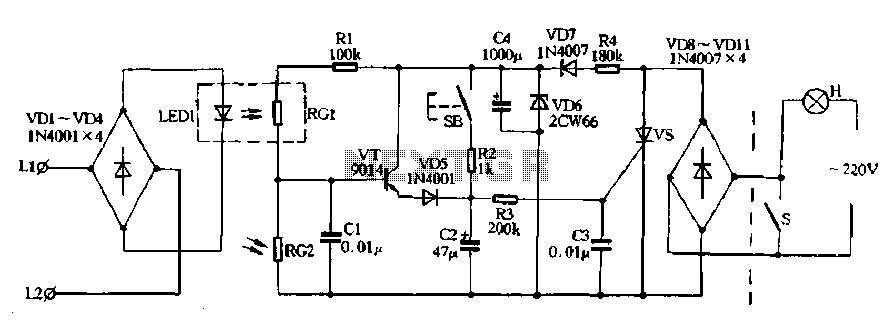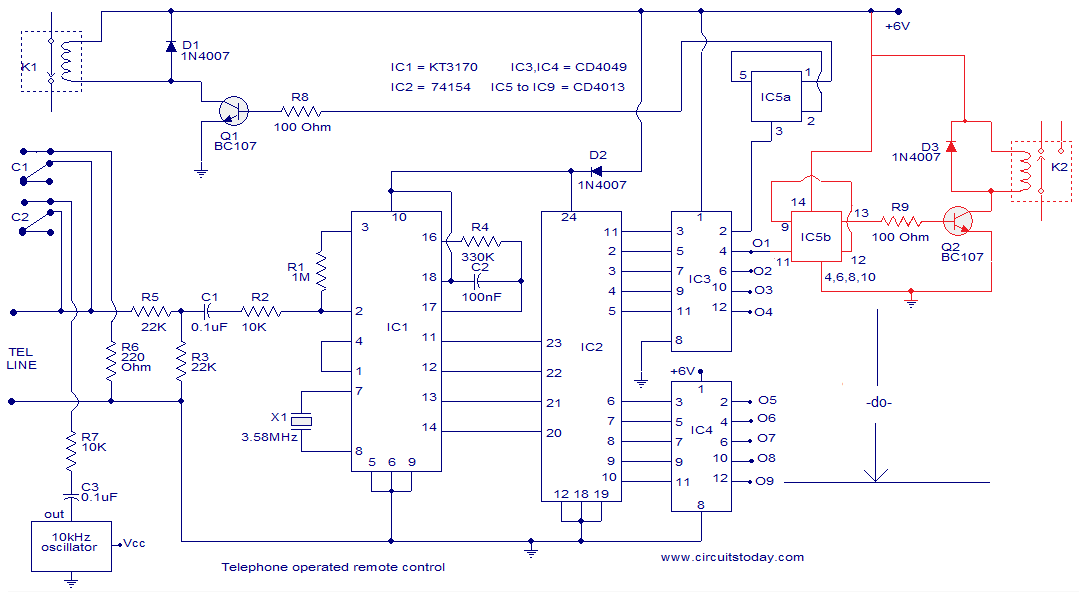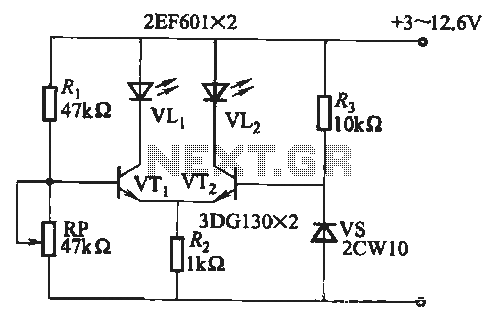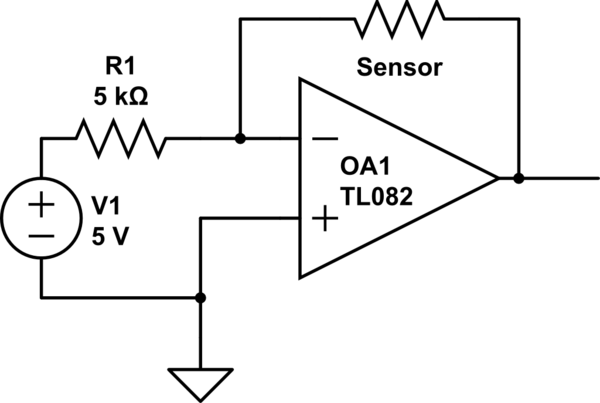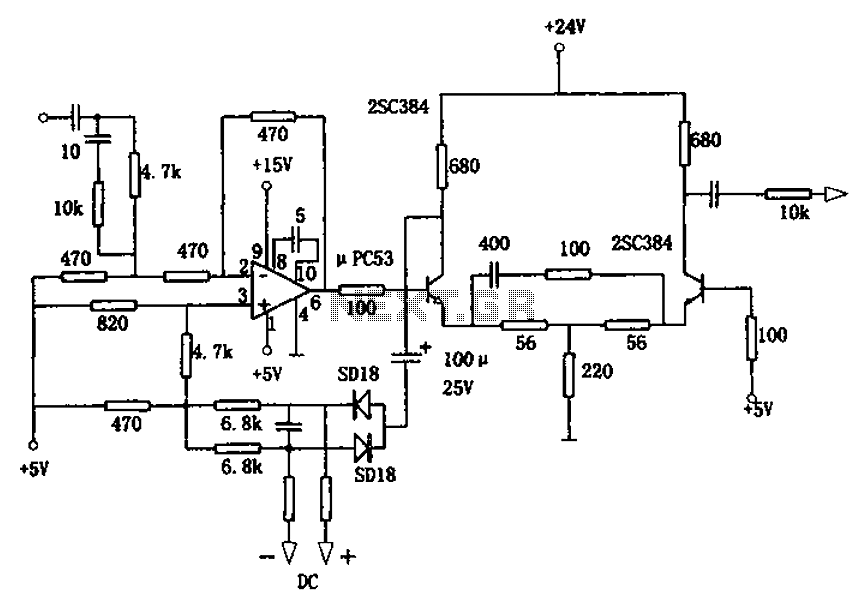
Telephone Line Indicator
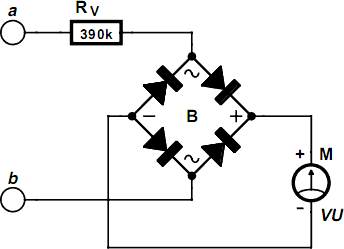
Utilizing an old moving coil instrument, it is straightforward to create a simple voltmeter that visually indicates the status of a telephone line. The circuit's high input impedance allows it to remain permanently connected to the line without drawing significant current. The schematic illustrates that the circuit comprises a series resistor, a bridge rectifier, and a moving coil meter. The resistor's value is contingent upon the sensitivity of the moving coil meter. In the author's prototypes, old VU meters requiring 250 µA for full-scale deflection were utilized, with an optimal resistor value of 390 kΩ. For a 100 µA instrument, the resistor value should be increased to approximately 680 kΩ. The selection of the resistor value should ensure that when the telephone is not in use, the meter deflects to about two-thirds of full scale. The meter's deflection indicates three different states of the telephone line: 1. A very small deflection indicates the line is in use (voltage 5 to 12 V). 2. A two-thirds full-scale deflection indicates the line is not in use (voltage typically 48 V). 3. Full-scale deflection indicates a ring signal (60 to 90 V AC). Due to the high idle and ring voltages, which can be hazardous, it is advisable to design the circuit to minimize any risk of electric shock upon contact.
The voltmeter circuit designed for monitoring telephone line status employs a moving coil meter, which is known for its accuracy and simplicity. The inclusion of a bridge rectifier allows for the conversion of alternating current (AC) signals, such as the ringing voltage, into direct current (DC) signals that the moving coil meter can interpret. This enables the meter to respond appropriately to the various voltage levels present on the telephone line.
The series resistor plays a critical role in determining the sensitivity of the meter. By selecting an appropriate resistor value, the circuit can be calibrated to provide meaningful readings across the different states of the telephone line. The optimal resistor values mentioned—390 kΩ for a 250 µA meter and 680 kΩ for a 100 µA meter—ensure that the voltmeter operates within safe limits while providing clear visual feedback on the line's status.
The design must also consider safety measures due to the potentially dangerous voltages involved, particularly during ringing. It is advisable to incorporate protective features such as insulated enclosures or barriers to prevent accidental contact with live components. Additionally, the circuit can be designed to include fuses or circuit breakers that would disconnect the circuit in the event of a fault, further enhancing user safety.
Overall, this voltmeter circuit serves as an effective tool for monitoring telephone line activity, providing clear visual indications while maintaining a high degree of safety and reliability.With the aid of an (old) moving coil instrument it is very little effort to make a simple voltmeter that, at a glance, indicates the status of a telephone line. Because the input impedance of this circuit is very high, there is no problem in having it permanently connected to the line, since it only draws a tiny amount of current.
The schematic sh ows that the circuit consists of no more than a series resistor, a bridge rectifier and a moving coil meter. The value of the resistor depends on the sensitivity of the moving coil meter. In his prototypes, the author used old VU meters that require 250 µA for full-scale deflection. A resistor value of 390 k appeared to be optimal for these meters. For a 100- µA-instrument, this resistor value will have to be increased to about 680 k. The starting point, when selecting a resistor value is that when the telephone is not in use, the meter should de‚ect about 2/3rd of full scale.
The amount of meter deflection indicates the three different states of the telephone line: 1. The deflection is very small: the line is in use (voltage 5 to 12 V). 2. The deflection is 2/3rd of full scale: the line is not in use (voltage typically 48 V). 3. Full-scale deflection: ring signal (60 to 90 V AC). Because the idle voltage and certainly the ring voltage are high enough to be dangerous, it is recommended that the circuit is constructed in such a way that it presents no hazard when touched. 🔗 External reference
The voltmeter circuit designed for monitoring telephone line status employs a moving coil meter, which is known for its accuracy and simplicity. The inclusion of a bridge rectifier allows for the conversion of alternating current (AC) signals, such as the ringing voltage, into direct current (DC) signals that the moving coil meter can interpret. This enables the meter to respond appropriately to the various voltage levels present on the telephone line.
The series resistor plays a critical role in determining the sensitivity of the meter. By selecting an appropriate resistor value, the circuit can be calibrated to provide meaningful readings across the different states of the telephone line. The optimal resistor values mentioned—390 kΩ for a 250 µA meter and 680 kΩ for a 100 µA meter—ensure that the voltmeter operates within safe limits while providing clear visual feedback on the line's status.
The design must also consider safety measures due to the potentially dangerous voltages involved, particularly during ringing. It is advisable to incorporate protective features such as insulated enclosures or barriers to prevent accidental contact with live components. Additionally, the circuit can be designed to include fuses or circuit breakers that would disconnect the circuit in the event of a fault, further enhancing user safety.
Overall, this voltmeter circuit serves as an effective tool for monitoring telephone line activity, providing clear visual indications while maintaining a high degree of safety and reliability.With the aid of an (old) moving coil instrument it is very little effort to make a simple voltmeter that, at a glance, indicates the status of a telephone line. Because the input impedance of this circuit is very high, there is no problem in having it permanently connected to the line, since it only draws a tiny amount of current.
The schematic sh ows that the circuit consists of no more than a series resistor, a bridge rectifier and a moving coil meter. The value of the resistor depends on the sensitivity of the moving coil meter. In his prototypes, the author used old VU meters that require 250 µA for full-scale deflection. A resistor value of 390 k appeared to be optimal for these meters. For a 100- µA-instrument, this resistor value will have to be increased to about 680 k. The starting point, when selecting a resistor value is that when the telephone is not in use, the meter should de‚ect about 2/3rd of full scale.
The amount of meter deflection indicates the three different states of the telephone line: 1. The deflection is very small: the line is in use (voltage 5 to 12 V). 2. The deflection is 2/3rd of full scale: the line is not in use (voltage typically 48 V). 3. Full-scale deflection: ring signal (60 to 90 V AC). Because the idle voltage and certainly the ring voltage are high enough to be dangerous, it is recommended that the circuit is constructed in such a way that it presents no hazard when touched. 🔗 External reference
Warning: include(partials/cookie-banner.php): Failed to open stream: Permission denied in /var/www/html/nextgr/view-circuit.php on line 713
Warning: include(): Failed opening 'partials/cookie-banner.php' for inclusion (include_path='.:/usr/share/php') in /var/www/html/nextgr/view-circuit.php on line 713
